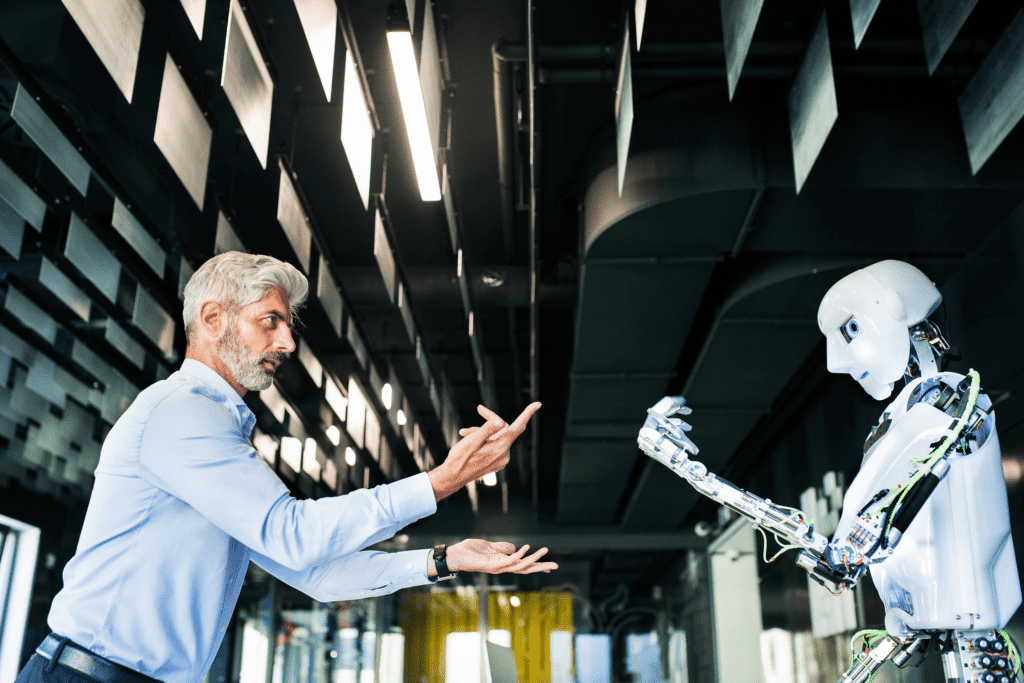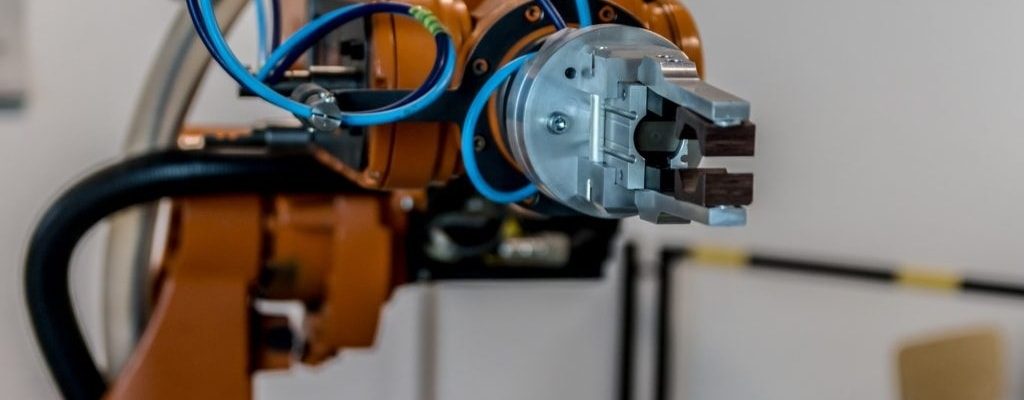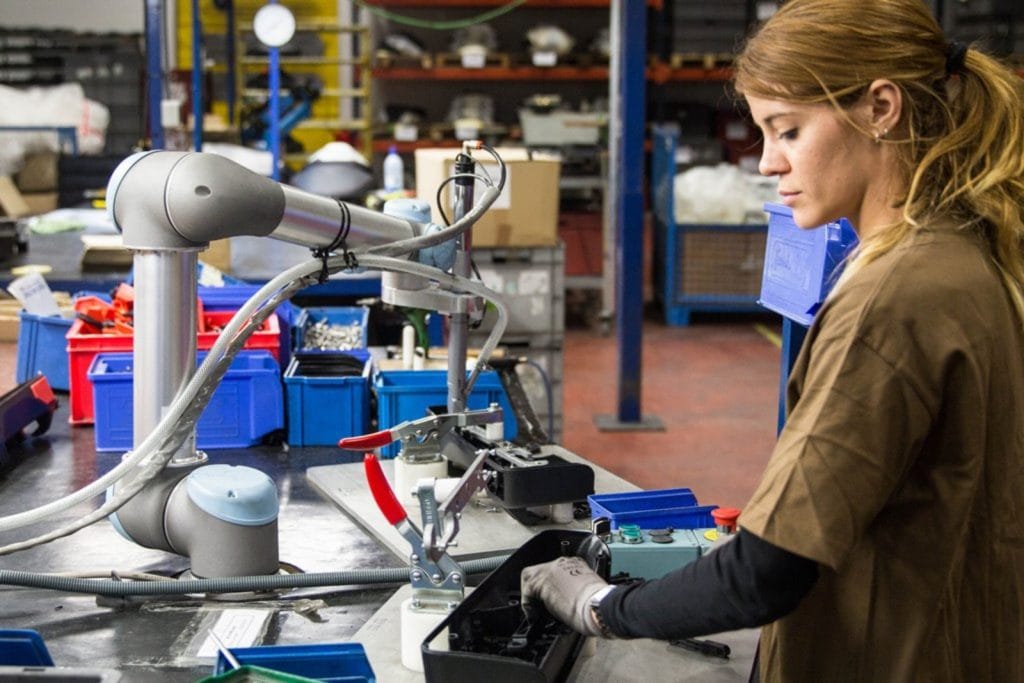Technology and innovation tend to gain tremendous momentum, bringing about innovative changes that cause significant disruption for industries. Those businesses that choose to fight or simply can’t keep up with change share the same fate of falling out of competition. Those businesses that embrace disruption stand a better chance of riding the wave of perceived chaos, better equipped to secure position in the state of Industry that follows. So far there have been four major upheavals in industry, the most recent of which being coined Industry 4.0. Rumblings of Industry 5.0 are already being felt, but let us fill you in on where we are now for some perspective.
In industry 4.0, the Industrial Internet of Things (IIoT) and intelligent devices and systems have taken primary focus. Relating to the numerous devices involved in manufacturing and automation that have grown increasingly intertwined, the IIoT allows businesses to take full advantage of the “smart factory” concept, where devices speak to each other and offer a new level of visibility and interactivity at every stage of the manufacturing process.
Industry 5.0 Focus
With technology developing at a tremendous rate, Industry 5.0 isn’t as far away as experts may have predicted as recently as a few years ago. Just as Industries are getting a grip on Industry 4.0, exciting new developments are coming to light that already has those who are in the know detailing what comes next.
Collaborative Robotics
Using robotics, automation processes are becoming incredibly streamlined, however, the powerful machines that enable such progress, remain significant hazards on the shop floor alongside their human coworkers. The field of collaborative robotics is addressing this with a focus on collaborative robots, cobots for short. While the current state of automation enables fantastic capability on the manufacturing floor, it can only do what it’s told, with human ingenuity assuming the driving force behind every action a robot completes.
John Phillips, Senior Manager of Production Services at Paradigm, has high hopes for collaborative robotics and the field’s ability to address the shortcomings of automation and put cobots on the same level as their human counterparts to take production processes to the next level. As Phillips puts it, “Collaborative robots are a new technology that allows us to have a human and a robot working in the same workspace. They’re now working in a pendulum type of operation where they can safely interact, allowing the human to check whether the robot has done an adequate amount of work before the final polishing is handed over to the human. It’s a very hand-in-hand kind of operation.”
Mass Personalization
The phrase may sound like an oxymoron, but Industry 5.0 concepts are making mass personalization a reality. Working on the new functionality and process improvement that collaborative robotics will provide, human laborers will be a more specialized component of the manufacturing process. Alongside their cognitive machine co-workers, humans will be able to mass-produce customized and personalized products for consumers with speed and precision.
This personalization can take many forms. Going beyond the scope of retail goods, personalization could take the form of medical treatments, specifically smart applications that appropriately summarize a patient’s unique lifestyle, health requirements, and physical properties to create a completely customized health regimen. Surgery is another application for collaborative robotics that is unique to every patient placed on the operating table. With the expertise of a trained surgeon and the precision of a robotic assistant, operating rooms are already enjoying the benefits of collaborative robotics.
Artificial organs, medical implants, transplants, blood transfusions, Diabetes, and a host of other medical applications can benefit from AI-driven and collaborative robotics-supported manufacturing processes.
The Davinci surgical system has been one such medical advancement in cobot technology for its ability to enhance surgeons’ operational capability in the surgical theater.
Productivity And A New Relationship Between Man And Machine
Up to this point, it should be very clear that Industry 5.0 is shifting back to a human focus, whereas Industry 4.0 had a predominantly mechanized focus. Humans will have more control over the robots within the manufacturing space, while the dangers that came with large, powerful robots will dissipate as more articulated and nimble cobots are incorporated into the manufacturing process.
Productivity improves as a result. Toronto’s Paradigm Electronics found exactly this to be the case when they incorporated a polishing unit alongside a human worker in their loudspeaker manufacturing process. Utilizing Universal Robots’ UR10 robotic arm, Paradigm employed both man and machine to polish their speaker cabs to a mirror fine finish with a 50% increase in productivity. Not only does this cut out the monotonous and sometimes dangerous tasks for human workers, but liability and healthcare costs resulting from such tasks are reduced for the organization, as well.
The consulting firm Accenture recently released an outlook from a survey conducted among 512 manufacturing executives around the world. The results of the study revealed that 85% of those surveyed foresee a collaborative production line between humans and robots emerging in their facilities by 2020. While this may have many manufacturers anxious that they’re getting left behind, it’s only natural that larger industry players integrate new technology first. As the technology is proven and becomes more heavily relied upon, the supply and integration costs fall and allow small and medium enterprises to compete in a more open marketplace.
New Job Creation
The modern-day fear of robots replacing humans in the workplace is deep-seated but largely speculative. Collaborative robots allow manufacturing floor workers to continue operating in their roles, with a reduction in the dirty, dangerous, and dull tasks they need to carry out. Training and education in how to program, operate and maintain a new fleet of robotic workers value-add to their already critical and difficult-to-replace skill sets. Amazon is already making strides in equipping its current workforce to emerge as the next generation of robotics experts.

A Chief Robotics Officer Could Be Implemented At 85% Of Corporations With More Than $50 Million In Annual Revenues By 2050.
The Chief Robotics Officer is the latest C-suite position to emerge alongside the growing robot workforce. The role’s primary focus, according to the Chief Robotics Officer Research Scenario, revolves around Robotics & Intelligent Operational Systems (RIOS) technologies. As manufacturing operations become more entrenched with advancing technology, businesses will find new departments emerging to coincide with their growing mechanized workforces.
More Data, More Visibility
In the age of information, data is king. Industry 5.0 promises to deliver even more visibility in terms of data from the automated processes on the manufacturing floor. In giving employees with key roles the data they need to fine-tune and adjust these processes in real-time, efficiency goes up while waste and costs go down for manufacturers. Leveraging the benefits of the next stage in automation evolution employs a more collaborative species of the robot, a more skilled human workforce, and the data insights to turn creativity and intellect into ruthlessly efficient processes.
About Encompass Solutions
Encompass Solutions is a business and software consulting firm specializing in ERP systems, EDI, and Managed Services support for Manufacturers and Distributors. Serving small and medium-sized businesses since 2001, Encompass modernizes operations and automates processes for hundreds of customers across the globe. Whether undertaking full-scale implementation, integration, and renovation of existing systems, Encompass provides a specialized approach to every client’s needs. By identifying customer requirements and addressing them with the right solutions, we ensure our clients are equipped to match the pace of the Industry.





